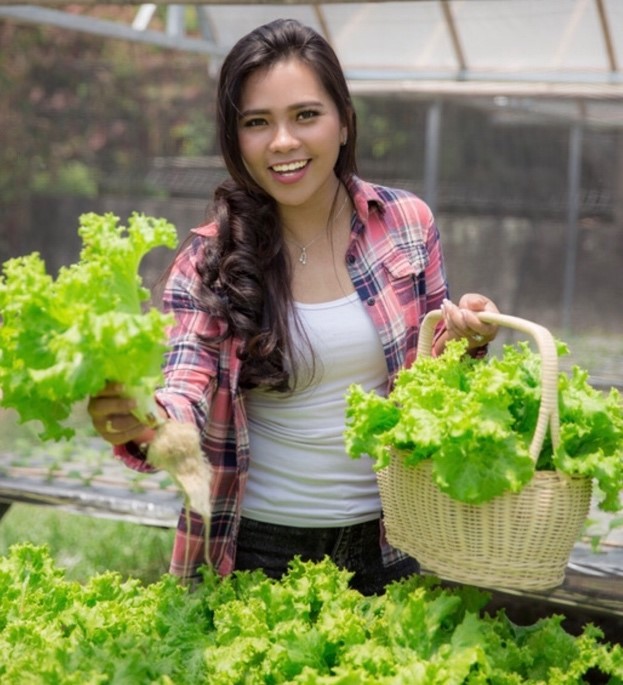- HOME
- Grow Your Groceries
- Sprouting Seeds
Sprouting Seeds: Complete Nutrition in 6 Easy Steps

Growing sprouts is really, really easy. Besides being easy, what a great way to get your fresh vegetables all winter long! Did I mention how inexpensive it is to grow your own? Buy a small packet of seeds and you will have more sprouts than you might want!
Growing sprouts doesn't require any soil, just water, air, and a little sunshine on the last day or two to develop chlorophyll.
Invest in emergency food storage now and enjoy peace of mind for the next 25 years. Don't miss out on the savings!
So here's the healthy jargon and why you should eat them all winter (summer too if you choose).
Sprouting seeds increases the vitamins (A, B complex, C and E) and minerals. We're talking exponentially here. Regular veggies have all these vitamins, but sprouts are concentrated vitamins.
They are full of quality protein, plus the protein quantity is increased, providing important amino acids and increased digestibility.
Sprouts: The Perfect Food Storage Companion

You probably have some canned or freeze dried vegetables stored (I do too), but there is nothing as nutritious as fresh vegetables. Sprouts can be ready to eat in 3-4 days at a cost of pennies per serving. Use them in place of lettuce and other green vegetables. Drop them in your soup or pile on your sandwich.
6 Easy Steps to Fresh Vegetables

I purchased a 3-tiered sprouter (the photo shows only 1 tier), but it isn't necessary for growing sprouts.
You probably have a quart jar somewhere in your home, some clean netting or nylon stocking-type material, and an elastic band to hold the material on the bottle top.
Here's all you need:
- Seeds: Select the type of seeds you wish to sprout and measure an amount - tablespoons or cups. Depending on the type of seed you choose, large seeds, like peas, garbanzo beans, or sunflower seeds, require about a cup; smaller seeds like alfalfa, broccoli, or radish require about two tablespoons to fill a quart jar or a sprouting tray.
- Soak: Fill the jar or tray with water and soak from 6-12 hours. (Soak less time during the heat of the summer.)
- Drain: Drain the water and spread the seeds evenly.
- Cover with a towel: Place on the counter away from direct sunlight. Cover with a towel if there is a chance that sunlight may be an issue at some point during the day.
- Rinse and drain thoroughly: Although 3 to 4 times a day is best, once in the morning and once in the evening is sufficient.
- Sunshine: On about the 3rd or 4th day, place the sprouts in sunlight, on a sunny windowsill or countertop to develop chlorophyll. Continue to rinse and drain twice a day until the sprouts are a nice green color (about 2 days).
TIP: Sprouts will stay fresh for a week or more when refrigerated as long as you rinse and drain every day or two, or when you get them out to eat. To keep them at their peak, you can give them an extra hour of sunlight after rinsing.
Health Benefits of Sprouts
Shhhh...don't tell the husband and kids that sprouts are healthy. Just use them in your recipes. But here are the wonderful benefits:
- SPROUTS are biogenic — meaning they are alive and capable of transferring their life energy to your body.
- SPROUTS contain enzymes which aid in digestion.
- SPROUTS provide the highest quality proteins.
- SPROUTS contain essential vitamins, proteins and minerals in their purest natural forms.
- SPROUTS provide a good source of fiber.
- SPROUTS slow the aging process.
- SPROUTS can provide you with a fresh garden in your kitchen when none other is available.
- SPROUTS are simple, easy and fast to grow. You can have fresh sprouts in 2 to 4 days.
- SPROUTS can be eaten alone, or in salads, sandwiches, soups, stir fry, pancakes, bread, or just about anything.
- SPROUTS are the missing link to daily nutrition and home food storage programs.
Delicious Ways to Use Sprouts
There are so many ways to use sprouts in your daily cooking that it could fill an entire cook book (and probably someone has). Eat them fresh out of the sprouter or in just about any recipe you choose - cooked or raw. The only limitation is your imagination.
Use in:
- Steamed vegetables - Add whole alfalfa, chia, clover, corn, garbanzo, lentil, mung, pea, radish, or wheat sprouts during the final 2 min. steaming time.
- Soups - For flavor or thickening, add chopped or whole sprouts––corn, garbanzo, lentil, mung, pea, radish, or wheat.
- Rice - Add whole or chopped alfalfa, barley, chia, pea, radish, or watercress, to rice dishes and to steamed rice after cooking—but just before serving.
- Stir Fry - Add any of these sprouts to your usual stir-fry vegetables - alfalfa, clover, mung, or radish sprouts.
- Vegetable Juices - Make your own "V8" juice with sprouts. Start with tomato juice, add ground chia, barley, cabbage, clover, lettuce, radish, and/or watercress. Add one sprout at a time so the flavor won't be too strong until you get the taste you like.
- Mashed Potatoes - Grind or chop very fine either alfalfa, chia, or clover sprouts to give potatoes a good flavor plus a little color.
- Baked Beans - Add any sprouted bean with short sprout. Use bean sprouts when it has just barely split open with a short sprout. Try lentil, mung, lima, pinto, or navy bean sprouts.
- Home-Baked Foods - Enhance the flavor of any baked goods by adding whole or chopped sprouts.
- Breakfast - Add some clover, alfalfa, or radish sprouts to your omelet or scrambled eggs. Add finely chopped buckwheat sprouts to your pancakes and waffles.
- Casseroles - Sprouts add a zesty flavor to casseroles, but only add them just before serving. Try cabbage, corn, lentil, mung, spinach, or wheat.
- Salads - Salads are the most logical place to use sprouts. Use them instead of lettuce or add to your lettuce salad. Use sprouts in coleslaw or substitute sprouts for the cabbage. Adding some radish sprouts will give it some zing!
- Sandwiches - Add alfalfa sprouts to chicken or tuna salad sandwich. Liven up that grilled cheese by adding alfalfa, clover, lettuce, or watercress sprouts for a more nutrition.
Here are a couple of easy recipes for using sprouts:

Pita Bread Sandwich
1 Pita Bread
4 slices avocado
2 T. Alfalfa sprouts
2 slices tomato
2 slices cucumber
1 T. salad dressing (your choice)
Fill pita bread half with avocado, sprouts, tomato and cucumber. Drizzle with dressing. Makes 1 sandwich.
Alfalfa Sandwich Spread
4 oz. softened cream cheese
2 T. minced chives
1/4 C. Alfalfa sprouts
Mix together and spread on favorite bread. Watercress may also be used.
What seeds can you sprout?
The following chart has a variety of seeds for sprouting in an indoor vegetable garden but there are many more you could choose. You can grow your own wheatgrass, sprouts, herbs and microgreens for pennies a day. When you really get into this, you'll find there are interesting seeds to sprout with fascinating flavors (not quite like their full-grown version). There are juicers for making your own wheatgrass juice, sprouting kits, mushroom kits, growing lights and racks — probably more help than you can absorb quickly!
TrueLeafMarket.com - Organic Sprouting Seeds, Kits & Supplies has what you need to learn how to have the most nutritious diet using sprouting seeds, wheat grass, herbs, microgreens, and a large variety of garden seeds. (affiliate link)
| SEED | AMOUNT | SOAK/ HOURS | RINSE/DAY | DAYS | HARVEST INCHES |
| Alfalfa | 1-1/2 Tbsp | 6-8 | 2-3x | 4-6 | 1-1/2 - 2 |
| Barley* | 1/2 Cups | 10-12 | 2x | 7-10 | 4-8 |
| Beans (general)* | 1 Cup | 10-12 | 2-3x | 2-5 | 1/4 - 3 |
| Broccoli | 2 Tbsp | 6-8 | 2-3x | 4-6 | 1 - 1-1/2 |
| Chinese Cabbage** | 2 Tbsp | 6-8 | 2-3x | 3-5 | 1 - 1-1/2 |
| Fenugreek | 1/4 Cup | 8-12 | 2x | 3-6 | 1 - 2 |
| Garbanzo* | 1 Cup | 12 | 2-3x | 2-3 | 1/2 - 1 |
| Green Peas* | 1 Cup | 12 | 2-3x | 2-3 | 1/2 |
| Lentil* | 3/4 Cup | 8-12 | 2-3x | 2-4 | 1/4 - 1 |
| Lettuce | 3 Tbsp | 4-8 | 2-3x | 3-5 | 1 - 1-1/2 |
| Mung Bean* | 1 Cup | 12-18 | 3-4x | 3-5 | 1 - 3 |
| Quinoa | 1/4 Cup | 4-6 | 2-3x | 1-2 | 1/4 - 1-1/2 |
| Radish** | 2 Tbsp | 6-8 | 2-3x | 4-6 | 1 - 2 |
| Red Clover | 2 Tbsp | 6-8 | 2-3x | 4-6 | 1-1/2 - 2 |
| Red Winter Wheat | 1 Cup | 10-12 | 2x | 2-3 | 1/4 - 1/2 (grass 6-8) |
| Soybean* | 1/2 cup | 12 | 2-3x | 2-5 | 1/2 |
| Sunflower | 1 Cup | 10-14 | 2x | 2-4 | 3 - 5 |
| Triticale | 2 Cups | 8-12 | 3-4x | 2-3 | 1/2 - 1 |
NOTES:
* Steam prior to eating to destroy anti-nutrients and toxins present in all raw beans.
** Gets hotter with increasing length.
What NOT to sprout.
- Don't sprout seeds intended for commercial use as they are usually treated with insecticides.
- Don't sprout tomato or potato seeds - they are generally poisonous to humans.
Let your creative juices flow as you add sprouts to your diet and increase your nutrition by growing different varieties because:
- they're ready quickly;
- they're free of chemicals;
- they're only pennies per serving; and,
- they're a complete food.
What's not to like? Try growing sprouts in your own small indoor vegetable garden.















